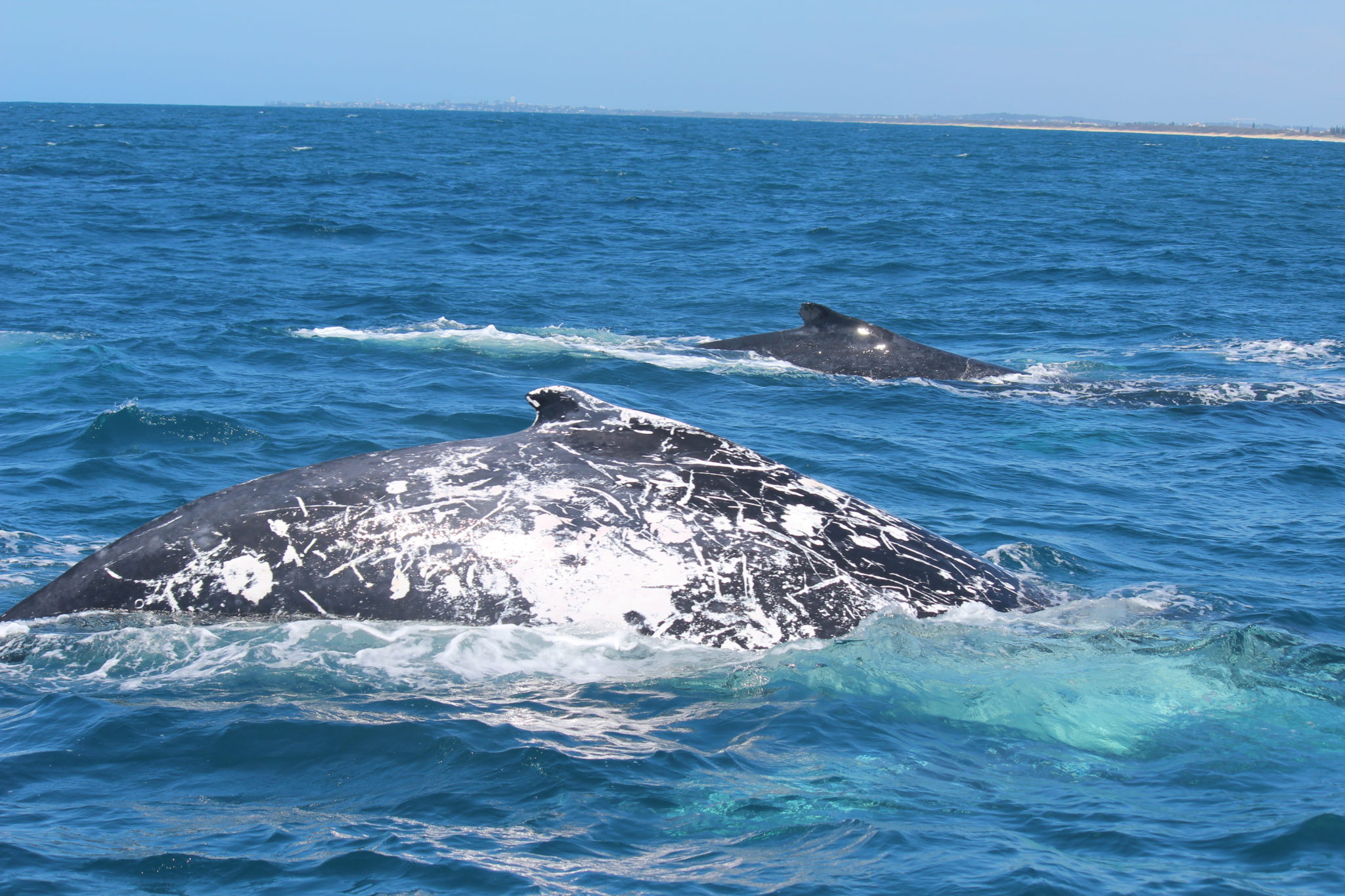Are you singing with joy post covid crisis and rejoicing in the easing of restrictions?
Well, it won’t be long before the giant humpbacks will be joining us in song.
The Sunshine Coast offers amazing opportunities to see these “marine composers” up close and personal. With many breaching, waving and singing inshore. Famous for their underwater communication, humpback sounds have been described as a combination of moans, grunts, blasts and shrieks.
Their songs are the longest and most varied in the animal world. Australia’s humpbacks communicate further than any other whale on earth. But we can’t hear all of their majestic sounds. At least 34 different vocal sounds have been identified ranging from low frequency (20Hz) to typically 3000Hz (like a bird chirp) and occasionally as high as 8000Hz. We can only sense sounds between 150 and 16000Hz so many low frequency noises are out of our range and yet they have no vocal cords. Humpbacks produce these sounds by moving air back and forth through body passages.
Experts believe their complex sounds are used mainly for sexual display rather than simply for joy or personal satisfaction. They are relatively quiet in summer but during winter migration and breeding activities, they sing long patterns of sound. Only the male of the species, sings. So when the whales reach here next month, there should be plenty of singing in anticipation of mating en route.
Marine biologist Philip Clapham has described whale song as “probably the most complex in the animal kingdom.” It is made up of a series of repeated themes which can last up to 30 minutes long and some sing for hours at a time. They can be heard kilometres away, both underwater as well as above the surface. An interesting new discovery has found that while all males in a group will sing the same song, note for note, whales change their song as they travel.
Originally, it was believed that humpbacks would only sing the one song, but it has been found that as they migrate, their song changes at different locations and from year to year. As they travel, they change their song to match those coming from other nearby whales. That way, all males in a certain population will sing the same local song. Indeed, Indian Ocean humpbacks sound very different to Pacific Ocean humpbacks or those in the Atlantic.
There are still many unanswered questions about their song, but let’s hope we get to enjoy many of their voices this whale watching season.
If you’d like the chance to experience the magic of humpback newborns playing alongside their parents this whale watching season, and also the older humpbacks breaching and tail slapping, feel free to give us a call on 0412 155 814 or email us on – info@sunshinecoastafloat.com.au. You can also book online if you wish.




